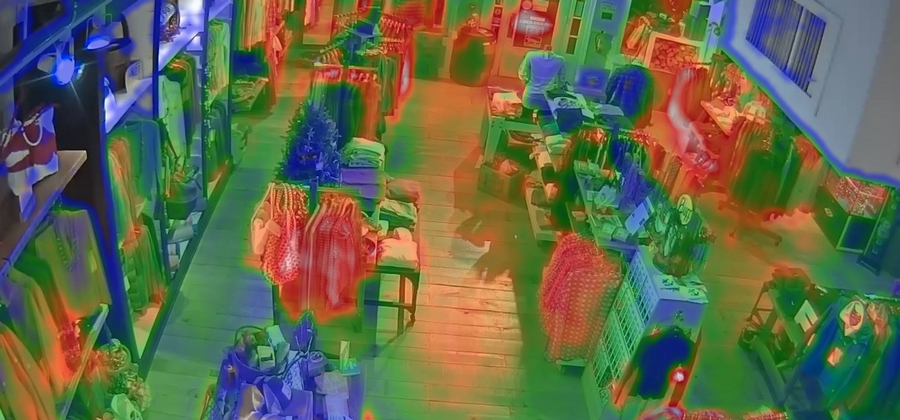
Computer Vision is a segment of artificial intelligence that is focused on enabling computers to interpret and understand visual information. This technology is used in various applications to analyze images and videos and draw conclusions based on the data they contain.
In the retail industry, computer vision is being leveraged in a variety of ways. From inventory optimization to customer behavior analysis and shelf space management to in-store analysis – retail AI and retail vision can improve the shopping experience for people, help to save costs, and increase revenues. When used at scale, computer vision technology can provide competitive advantages and play an essential part in the long-term digitalization strategy for retailers.
The Visibility Gap:
One of key challenges retailers face is the information gap between in-store and e-commerce insights. Online retailers have the advantage of accessing real-time data that provides a comprehensive understanding of the customer journey—from the moment a shopper enters a website to their final purchase. This includes metrics such as who visited the site, how long and what products they viewed. Conversely, brick-and-mortar stores often lack this level of insight, making it difficult to fully understand customer behavior, the shopping journey and pertinent marketing and sales data.
However, computer vision closes this gap by providing retailers with actionable in-store intelligence. Through advanced cameras, heat maps and sensors, retailers can gather data on various aspects of the in-store shopping experience. This includes tracking customer foot traffic, identifying high-dwell areas and monitoring interactions with products and staff. With this information, retailers can gain a deeper understanding of customer behavior, such as which areas of the store attract the most attention and where customers may need additional assistance.
Customer Engagement:
Computer vision can significantly enhance customer engagement and purchasing by creating more personalized and interactive shopping experiences. It helps retailers optimize store layouts and refine marketing strategies. By making high-demand products easily accessible and placing promotional displays in high-traffic areas, retailers not only improve customer satisfaction, but also drive sales and increase operational efficiency.
Moreover, by monitoring customer interactions with products and staff, computer vision can identify when a customer might need assistance. For instance, if a customer spends a long time looking at a particular product, a store associate can be alerted to offer help or provide additional information. Additionally, geofencing can be implemented to send tailored promotions to customers based on their location and purchase history. This data can be used to create highly personalized shopping experiences and tailored product recommendations.
Computer vision can also monitor checkout lines and deploy additional staff when lines get too long, reducing wait times and improving the overall shopping experience.
Computer Vision and Heat Maps:
In one example, a large telecommunications and technology company to collect data from high-volume, busy stores. The goal was to gain insights into customer behavior and improve in-store merchandising strategies. The brand developed heat maps to track customer movements, leveraging real-time imaging to detect movements and allocate colors related to traffic volume to each floor area. These heat maps help retailers understand the functionality of the stores and identify customer behavior patterns.
The customer insights collected from these heat maps helped the brand better optimize merchandise placement, driving conversions and boosting sales. The enhanced camera analytics provided valuable insights into customer behavior, allowing the brand to optimize retail spaces and boost sales.
Security and Loss Prevention:
Retailers can effectively use computer vision to reduce theft while maintaining a positive customer experience by integrating advanced security measures with customer service enhancements. Retailers can deploy computer vision throughout the store to monitor customer activity in real-time. These cameras can identify suspicious behavior, such as loitering in specific areas or unusual movement patterns, which may indicate potential theft.
Computer vision can help identify “dead zones” within the store – areas that are not easily visible to staff and are more prone to theft. By recognizing these zones, retailers can adjust camera placements or increase staff presence to deter theft. Additionally, automated checkout systems powered by computer vision can reduce the likelihood of theft at self-checkout stations by ensuring that all items are scanned and paid for correctly.
Clear Sightline to Retail Success:
As the retail landscape continues to evolve, the adoption of computer vision technology will be essential for retailers looking to stay competitive and innovative. By harnessing the power of this technology, retailers can create more engaging, efficient and secure shopping experiences, ultimately leading to increased customer loyalty and business growth. Embracing computer vision is not just a step towards modernization – it is a strategic move that positions retailers for long-term success in the digital age.